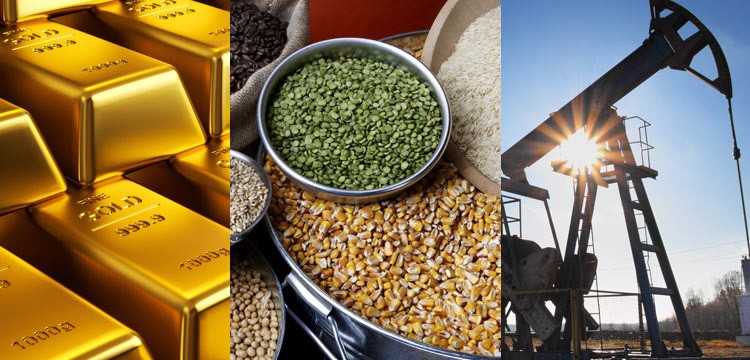CRUDE AND OTHER COMMODITIES REMAINS HIGHLY VOLATILE

WTI crude futures jumped more than 2.5% to above $96.5 per barrel on Tuesday, recovering from a 4% loss in the previous session, on relief about demand in China after Shanghai eased some virus restrictions despite most remaining confined. Also, OPEC warned it would be nearly impossible to replace Russian oil lost by a possible ban from the EU. The EU is reportedly drafting proposals for an oil embargo on Russia although there was no agreement to ban Russian crude. Oil prices are now around levels before the Russia’s invasion of Ukraine in late February, with IEA member states planning to release some 240 million barrels over the next six months in a bid to calm volatile oil markets.
US natural gas futures broke above the key $6.6/MMBtu level for the first time since December 2008, amid lingering worries about global energy supplies exuberated by the war in Ukraine against a growing demand backdrop. European Union countries agreed to ban coal imports from Russia while pledged to start working on an embargo on Russian oil, gas and nuclear fuel, putting additional pressure on energy markets. Shipments of LNG to Europe are already at record levels, and the US is facing significant pressure to help the continent secure further supplies. Supporting prices further were inventory data showing a more-than-anticipated draw of 33 bcf last week to a nearly 3-year low and at around 17% below their five-year average.
Gasoline futures bottomed around the $3-per-gallon mark, close to levels not seen since mid-March, pressured by fears of weaker fuel demand in China and plans to release record volumes of crude and oil products from strategic reserves. The latest coronavirus-induced restrictions in China, particularly in Shanghai, clouded the outlook on fuel consumption as the country battles its biggest outbreak ever. On top of that, the IEA will release 120 million barrels of oil, 60 million from the US and the other half from other IEA members, in a coordinated effort to ease crude prices. Meanwhile, US gasoline inventory levels unexpectedly fell by 2,041 thousand barrels in the week ended April 1st, compared with analyst forecasts of a 63 thousand barrel injection into storage.
Heating oil futures hovered at $3.3 a gallon, almost a quarter below a record high of $4.3 hit on March 9th, as the IEA announced a release of up to 120 million barrels, of which half will be part of the US record 180 million barrel release. Also, US distillate stockpiles, including diesel and heating oil, rose by 1.394 million barrels in the week ended April 1st, compared to market expectations of a 0.133-million-barrel drop, data from the EIA Petroleum Status Report showed.
Newcastle coal futures, the benchmark for top consuming region Asia, consolidated around the $300-per-tonne mark after the European Union announced a ban on Russian coal imports from August onwards. Markets were already tight even before the Russian invasion of Ukraine as the energy crisis and soaring natural gas prices in Europe and Asia in late 2021 boosted coal use for power generation. Coal hit a record high of $430 a tonne in March, as the Ukraine war prompted users to seek alternatives to Russian shipments and as an economic rebound from the pandemic sparked further demand for fossil fuels.
Steel Rebar futures fell toward CNY 5,000 per tonne, after being stuck at an over 5-month high of CNY 5,115 last week, dragged down by demand concerns, alongside rising output and lower raw materials prices due to worries about China’s economic recovery. Consumption of steel and main steel products in China has been under pressure in March and April, the traditional peak season, as Covid-related restrictions disrupted industrial activities. On the supply side, reposts showed China’s daily crude steel output was at about 2.16 million tonnes in late March, up by 5.41% from that recorded in mid-March. The data also showed major steel producers churned out 23.76 million tonnes of crude steel in late March.


